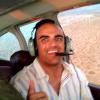Getting closer to buying own plane. I think I am set on a M20k. Couple questions
-
Members Online
- shawnd
- NickG
- Mooney-Shiner
- WilliamR
- OR75
- Pinecone
- EricJ
- LP1
- Kelpro999
- Gilt
- Jim F
- stevesm20b
- hammdo
- Pictreed
- Fritz1
- ChrisH
- Rmnpilot
- jcolgan
- KSMooniac
- M20F
- Keith20EH
- eman1200
- dzeleski
- Lax291
- Marc_B
- Stan
- ElkoRandy20J
- Captnmack
- kaba
- Jeph357
- Ragsf15e
- daytonabch04
- Red Leader
- RangerM20
- Aaviationist
- CCAS
- 47U
- UteM20F
- mooniac58


Recommended Posts
Join the conversation
You can post now and register later. If you have an account, sign in now to post with your account.